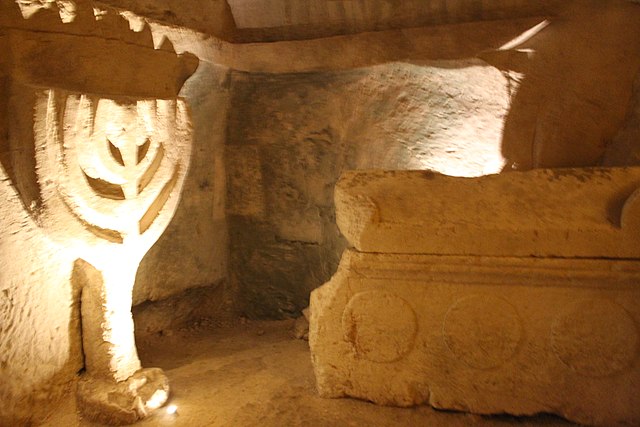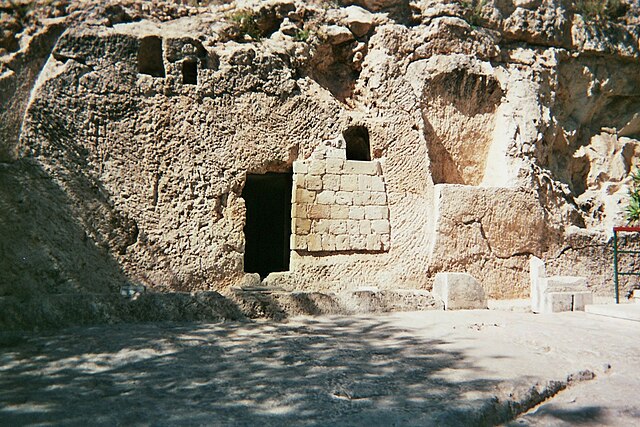Beit She'arim necropolis is an extensive necropolis of rock-cut tombs near the remains of the ancient Jewish town of Beit She'arim. In early modern times the site was the Arab village of Sheikh Bureik; it was depopulated in the 1920s as a result of the Sursock Purchases, and identified as Beit She'arim in 1936 by historical geographer Samuel Klein.
Facade of the "Cave of the Coffins"
Beit She'arim National Park
Wall inscription (epitaph) in Greek: "The tomb of Aidesios, head of the council of elders, from Antiochia"
Menorah and sarcophagus in "Cave of the Coffins", Catacomb no. 20
Rock-cut tombs in ancient Israel
The use of rock-cut cave tombs in the region began in the early Canaanite period, from 3100–2900 BCE. The custom lapsed a millennium, however, before re-emerging in the earliest Israelite tombs, dating to the 9th century BCE in Jerusalem. The use of rock-cut tombs reached its peak in the 8th and 7th centuries BCE, before rapidly declining and eventually falling out of use in the 6th century BCE in some regions. It reappeared during the Second Temple period and continued into the Late Roman and Byzantine periods.
The Tomb of Benei Hezir and the so-called Tomb of Zechariah
Detail of the Tomb of Benei Hezir
Remnants of the Monolith of Silwan, a First Temple period tomb.
The so-called Garden Tomb (9th–7th century BCE)








